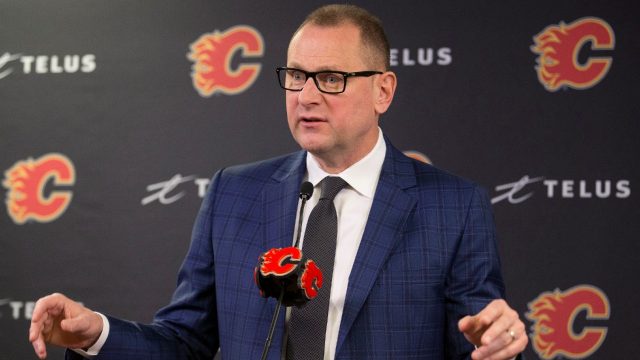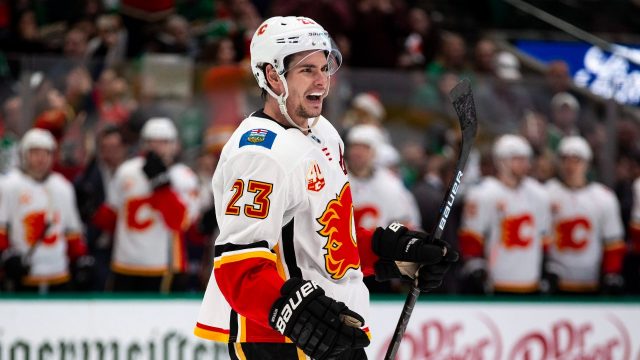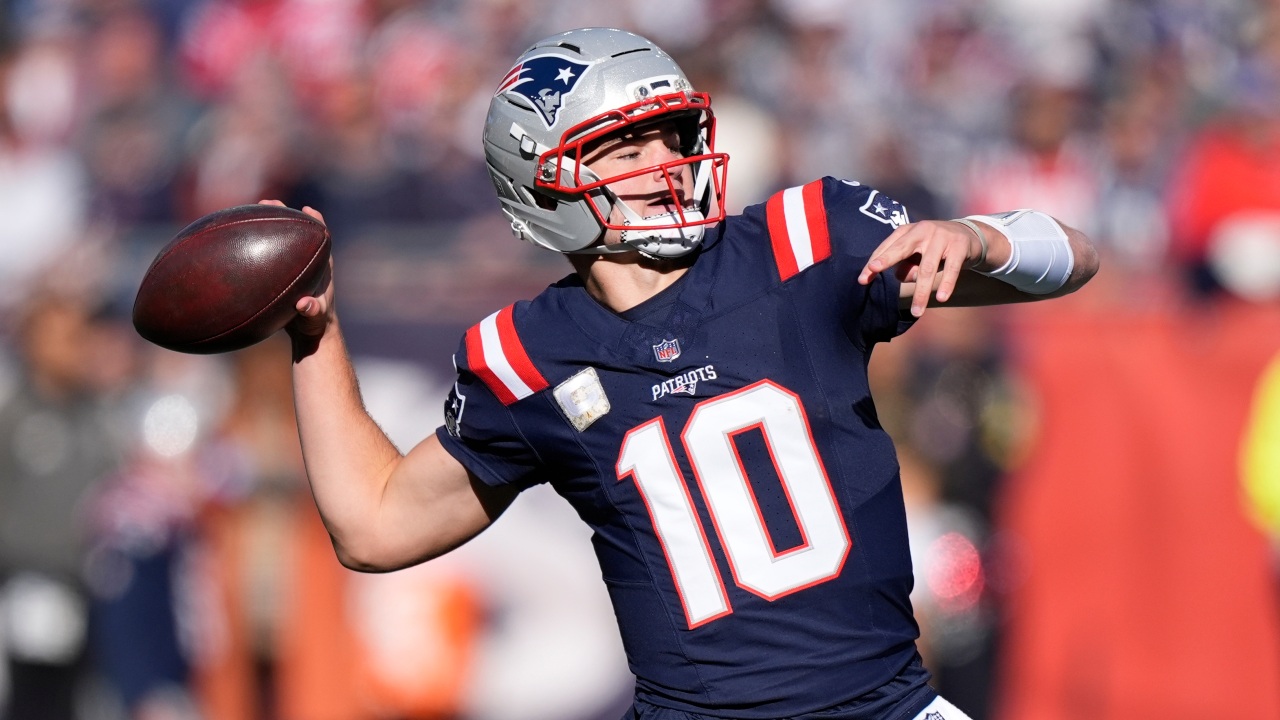
MONTREAL — On Thursday, just moments after agreeing to eventually send “future considerations” to the Calgary Flames for Sean Monahan and a conditional first-round pick, Kent Hughes confirmed Carey Price won’t start next season on time with his Montreal Canadiens.
Not only did the Canadiens’ general manager also say Price’s only place to start in Montreal would be on the team’s long-term injury-reserve list, he added it was unlikely Price would play at all next season.
And Hughes fell just short of saying Price will never dress for another NHL game again.
“I think if Carey’s going to come back, he’s going to need surgery,” Hughes affirmed.
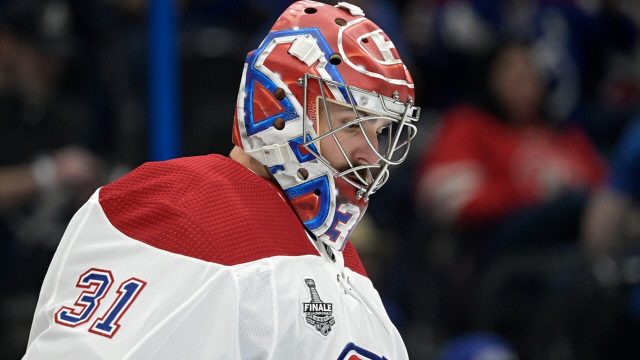
You have to think if Price was willing to go down that road, he’d have already taken his first steps on it. His last game was on April 30 — a 37-save performance to help the Canadiens notch a 10-2 win over the Florida Panthers — and he’s had ample time to submit to an operation after PRP injections taken in June failed to remedy the swelling he was experiencing in his knee.
Who would blame Price, who turned 35 on Tuesday, for not wanting to?
Who would blame him for not wanting to go through all that pain without any assurances he can return to play at the level he expects of himself?
And even if Price felt the outcome of another procedure would save his career, who would blame him for not wanting to go through with it right now to play for these Canadiens, who are as far away as they can be from delivering the only thing he still has an interest in playing for?
Price wants the Stanley Cup, and Hughes is still only in the early stages of preparing the Canadiens to eventually contend for it.
On Thursday, the GM was willing to take on the full weight of Monahan’s $6.375-million cap hit — despite the Canadiens being so capped out that Price’s inevitable placement on LTIR is practically a necessity to make the numbers work — just to get his hands on the future asset that came with it. He helped Calgary clear space to sign Nazem Kadri to a seven-year, $49-million contract and wanted a first-round pick in 2023 to do it. He settled for the option of having one in 2024, and, in the end, might very well be willing to take the one in 2025 instead because it’s going to be at least that long before the Canadiens cement themselves in their competitive window.
Price doesn’t have that long.
It’s tragic, considering the career he’s had. He’s the winningest goaltender in Canadiens history, arguably the best goalie of his generation, an Olympic champion, a player who gave everything he could since being drafted by Montreal fifth overall in 2005, and he deserved to go out on his own terms instead of being forced to the sidelines by injury.
But Price can’t continue this way, and neither can the Canadiens.
They’re moving forward, focused intrinsically on their long-term future and in need of the financial flexibility Price moving to LTIR affords them on a salary cap that’s been flat since the pandemic hit, and will continue to be relatively flat for this season and next. His contract carries a $10.5-million hit in each of the next four seasons, and it would’ve been especially crippling (even as early as this summer, with contracts still due to Kirby Dach and Cayden Primeau, and definitely by next summer with Cole Caufield due an extension) if it remained on the cap while he couldn’t perform anywhere near his top end.
For a player as proud as Price — one who consistently used the words “acceptable standard” to explain what he’d like to achieve in order to continue pushing through pain to play — solely eating up precious space on Montreal’s cap wouldn’t be appetizing.
He’ll come to training camp in the fall, go through his physical, and then we’ll have more clarity on what the long-term future holds for him.
“At that point in time, in all probability, we will have another media availability with Carey and myself and one or more of the doctors,” said Hughes.
And then the Canadiens will move on, with another first-round pick added to the ones that came over the first months of Hughes’ tenure, and with Monahan bolstering the centre line in the short term.
He’s an asset, too, in the final season of a seven-year contract that injuries prevented him from living up to since 2018. The 27-year-old is coming off a second hip surgery since 2021 and, for the first time in a long time, feeling like he can contribute in a way he wasn’t able to for too long.
“I think this summer is a big one for me,” Monahan said in a Zoom conference hours after Hughes spoke on Thursday. “I got the surgery earlier than I did the year before, so I’ve put in a lot of work this summer and right now I’m back on the ice four times a week. It’s been a long time coming for me to feel healthy, so I’m excited to play hockey again at a high level and I’m really excited to join the Canadiens.”
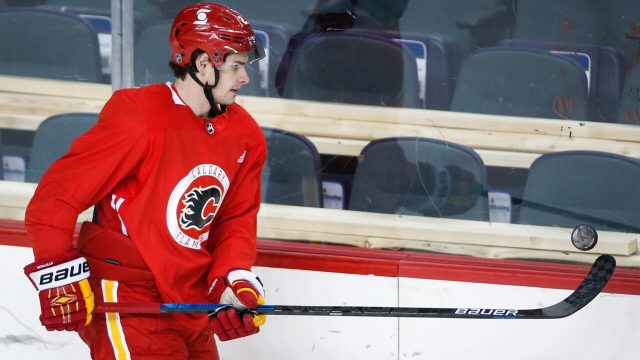
He may never again be at the same level he was once at in this league, but if Monahan can get closer to being the player who accumulated the bulk of his 212 goals and 462 points over the first 460 games of his 656-game career, he can help insulate Nick Suzuki, Christian Dvorak, Jake Evans, Dach and also net the Canadiens a very healthy return on the market by next trade deadline.
It’s a calculated move on Hughes’ part, no matter when that first-round pick he acquired from Calgary falls into place. In Flames GM Brad Treliving’s words, the exhaustive conditions on that pick were put in place to minimize the risk for his team and maximize the reward for the Canadiens for taking on Monahan’s contract in full.
“You really hate (trading a first-round pick to move a contract),” Treliving said, “But when there’s no (salary-cap) space, you have to find space.”
The Canadiens had it and used it to their advantage. Unfortunately, it was there because Price won’t be able to play this season and may never be able to play again.


